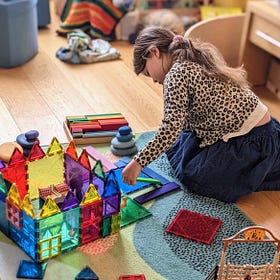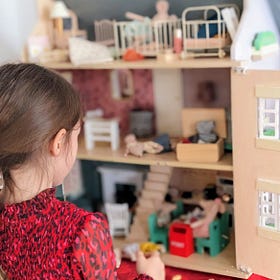Power of Play Mini Course
The key to prioritising play is understanding the benefits first.
The Power of Play-Based Learning
Welcome to the first part of our 4-part email series for May: “The Power of Play-Based Learning.” If you’ve been following me for a while now, you’ll know that I’ve been an advocate for play-based learning for many years now. Every day, I see the benefit a child-led approach when I watch my children play, create and do their schoolwork. Just recently, my youngest son (now 5) was learning about 3D shapes in school - he could grasp the concepts quickly because he has spent so many years manipulating magnetic tiles to build constructions.
Understanding Different Types of Play
Welcome to email 2 of the ‘Power of Play’ mini series. In this email, we are focusing on understanding the different types of play. We’ll explore the serious business of play and how the stage your child is in will determine the type of play that they do.
Creating an Engaging Play Environment: Nurturing Your Child’s Growth through Play
Every morning, before my children go to school, they are engaged in play, creative activities or reading; we don’t do screens or watch TV. There isn’t any chaos or frantic commands for them to ‘hurry!’ This isn’t some fanciful dream I’ve conjured up but an intentional reality I put in place several years ago when I realised mornings didn’t have to be chaotic. One of the biggest reasons this is possible for us is because we have created an engaging play environment that allows my children to play independently and creatively without having to rely on me.
Supporting Play-Based Learning in Everyday Life
It’s no secret that children learn best when they’re actively engaged in play. From exploring new concepts and materials to fostering social skills and self-confidence, play-based learning offers a wealth of benefits for young children. As parents and caregivers, our role is to support and encourage these playful learning experiences in everyday life, providing a nurturing environment where our little ones can thrive.






